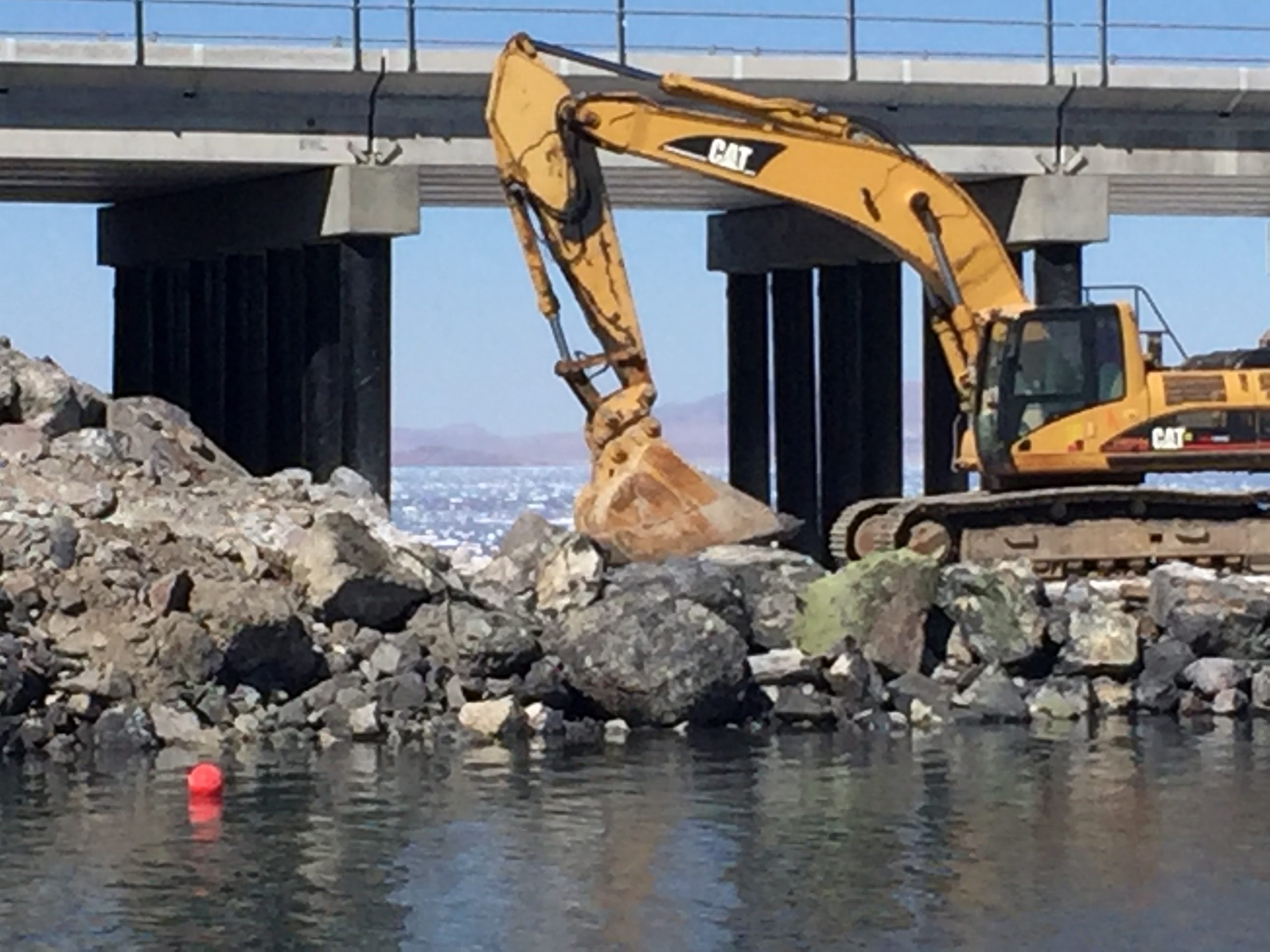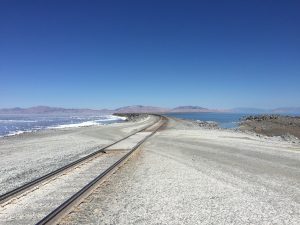
The scheduled breach of the new bridge opening on the Union Pacific railroad causeway that crosses the Great Salt Lake will be postponed until December. The decision comes after natural resource experts from the Utah Department of Natural Resources (DNR) and the Utah Department of Environmental Quality (DEQ) worked with the U.S. Army Corps of Engineers and Union Pacific Railroad to delay the project.
Postponing the breach, which would allow water to flow between the lake’s north and south arms, gives state biologists and water experts more time to assess whether it’s in the lake’s best interest to further delay the breach, specifically until water levels rise.
“We are committed to maintaining a healthy Great Salt Lake. We know this delay is an inconvenience for Union Pacific and are appreciative of their leadership for supporting this effort,” said Brian Cottam, director of the Utah Division of Forestry, Fire and State Lands. “Postponing the breach allows impacts to be minimized and is in the best interest of the lake’s ecology. With drought conditions and low lake levels persisting, the delay helps protect the lake’s ecosystem and wildlife. The decision also allows the state to maintain its ability to respond to search and rescue calls if necessary.”
While originally scheduled for early October, breaching the causeway will cause the south arm to drop in elevation by at least one foot. As a result, biologists from the Utah Division of Wildlife Resources believe the salinity of the south arm could increase because the higher salinity water from the north arm will mix with the south instead of forming a deep brine layer. The increased salinity can harm the lake’s ecosystem, hurting migrating birds and brine shrimp.
Juvenile brine shrimp are most susceptible to rapid change in salinity. Its population could significantly decrease with fewer juveniles transitioning to adulthood, which leads to fewer cysts being produced. Such a situation would harm the repopulation of brine shrimp and its harvest.
shrimp are most susceptible to rapid change in salinity. Its population could significantly decrease with fewer juveniles transitioning to adulthood, which leads to fewer cysts being produced. Such a situation would harm the repopulation of brine shrimp and its harvest.
Adult brine shrimp also serve as the sole food source for the fall staging population of four to five million eared grebes. Over half of the entire eared grebes population winters at the Great Salt Lake. A depleted food supply could jeopardize their migration, along with the largest inland wintering population of common goldeneye. The goldeneye may have less available food as lake levels drop and expose microbialites with their brine fly larvae.
Lower lake levels caused by the planned breach of the Union Pacific causeway would also harm the Division of Parks and Recreation’s ability to respond to search and rescue calls. Fall is an especially busy time of year when the lake is used by fisherman harvesting brine shrimp and waterfowl hunters.
“Breaching the causeway at this point in time would hurt our ability to launch rescue efforts, “said State Parks Director Fred Hayes. “ Public safety is our top priority. Not only is fall a busy season for lake industry and hunters, but the lake is also directly under the flight path of many commercial airliners and privately owned aircraft. We need to be prepared to respond if there is an emergency.”
Rescue One, the only rescue vessel currently able to launch on the lake, would likely be trapped in the Great Salt Lake Marina within a few weeks of the breach due to shallow water. Promontory Marina, a privately leased marina operated by the Brine Shrimp Co-op, would be the only area on the lake capable of launching search and rescue. However, launching from Promontory would delay rescue efforts by at least two hours.